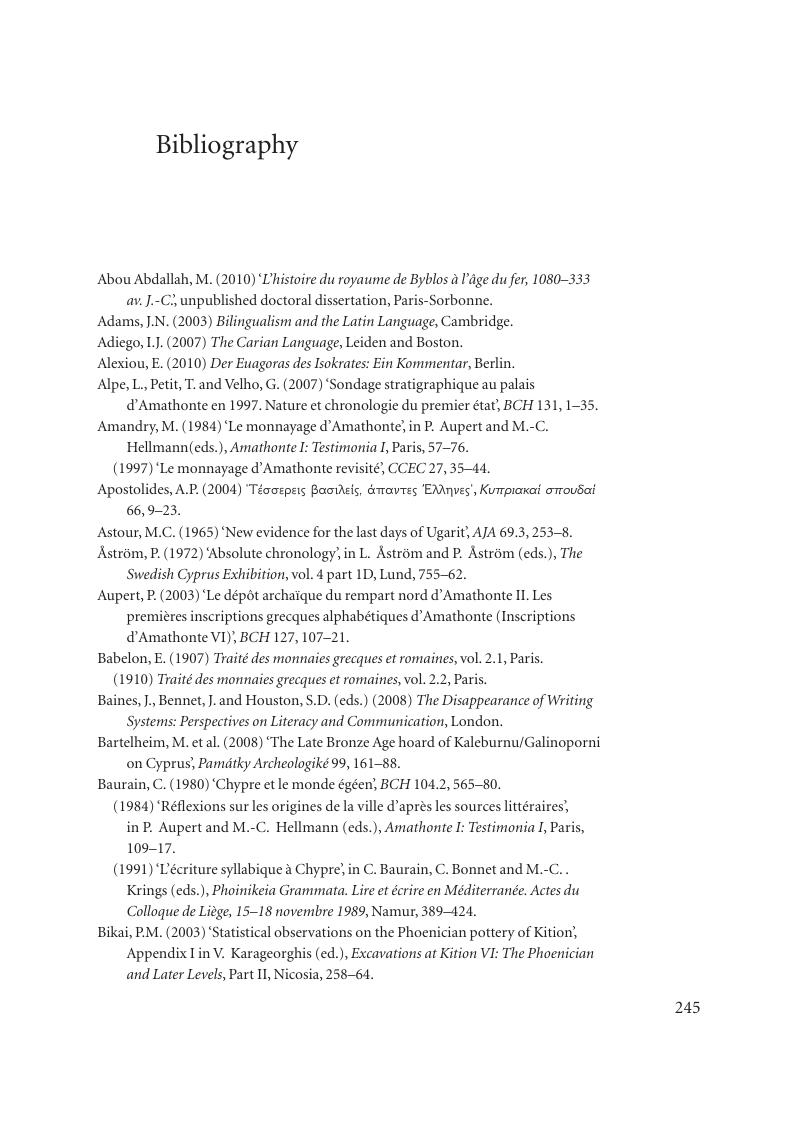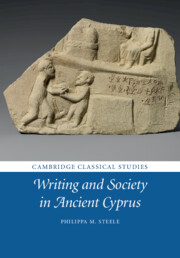Book contents
- Writing and Society in Ancient Cyprus
- Cambridge Classical Studies
- Writing and Society in Ancient Cyprus
- Frontispiece
- Copyright page
- Contents
- Figures
- Tables
- Maps
- Acknowledgements
- Abbreviations
- Introduction
- 1 The Advent of Literacy on Cyprus
- 2 Scripts and Languages in Geometric Cyprus
- 3 ‘Understanding’ Undeciphered Scripts and Unidentified Languages
- 4 Visible Languages and Cypriot Identities
- 5 Cypriot Writing at Home and Abroad
- Bibliography
- Index
- References
Bibliography
Published online by Cambridge University Press: 08 October 2018
- Writing and Society in Ancient Cyprus
- Cambridge Classical Studies
- Writing and Society in Ancient Cyprus
- Frontispiece
- Copyright page
- Contents
- Figures
- Tables
- Maps
- Acknowledgements
- Abbreviations
- Introduction
- 1 The Advent of Literacy on Cyprus
- 2 Scripts and Languages in Geometric Cyprus
- 3 ‘Understanding’ Undeciphered Scripts and Unidentified Languages
- 4 Visible Languages and Cypriot Identities
- 5 Cypriot Writing at Home and Abroad
- Bibliography
- Index
- References
Summary

- Type
- Chapter
- Information
- Writing and Society in Ancient Cyprus , pp. 245 - 268Publisher: Cambridge University PressPrint publication year: 2018



